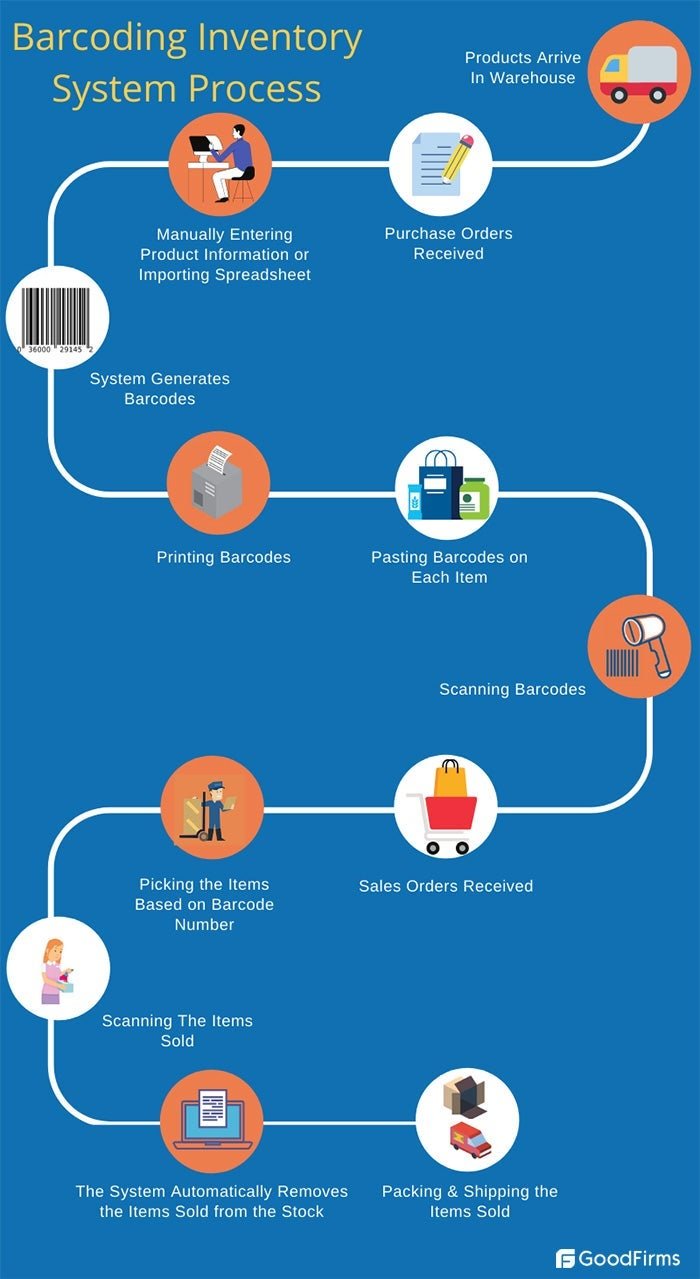Embark on Your Inventory Journey with Barcode Basics
Are you ready to take your inventory management system to the next level? Look no further than barcode basics! By incorporating barcodes into your inventory tracking process, you can simplify organization, increase efficiency, and reduce errors. In this beginner’s guide, we will walk you through the basics of setting up a barcode system for your inventory.
First things first, let’s talk about what a barcode is. A barcode is a visual representation of data that is machine-readable. It consists of a series of parallel lines of varying widths that are scanned by a barcode reader. Each barcode contains unique information that can be used to identify a specific product, location, or asset.
To get started with barcoding, you will need a few key components. The first is a barcode scanner, which is a device that can read and decode barcodes. There are many different types of barcode scanners available, ranging from handheld scanners to smartphone apps. Choose a scanner that best fits your needs and budget.
Next, you will need to generate barcodes for your inventory items. This can be done using a barcode generator software or online tool. Simply input the information you want to encode, such as a product name or SKU number, and the software will create a unique barcode for you to print and attach to your items.

Image Source: foolcdn.com
Once you have your barcode scanner and generated barcodes, it’s time to start labeling your inventory. Attach a barcode to each item, location, or asset that you want to track. This will allow you to quickly and easily scan items into your system, saving you time and reducing the risk of human error.
With your inventory items labeled, it’s time to set up your inventory management software. There are many software options available, ranging from simple spreadsheet templates to advanced inventory tracking systems. Choose a software that meets your needs and integrates seamlessly with your barcode system.
Now that your barcode system is set up, it’s time to start scanning! Use your barcode scanner to scan items in and out of your inventory system. This will update your inventory records in real-time, giving you an accurate view of your stock levels and locations.
Barcode basics can revolutionize the way you manage your inventory. By incorporating barcodes into your system, you can streamline organization, increase efficiency, and reduce errors. So why wait? Embark on your inventory journey with barcode basics today and take your inventory management to the next level!
Simplify Organization with This Beginner’s Guide!
Welcome to the exciting world of barcode basics and inventory management! If you’re looking to streamline your business operations and keep track of your products efficiently, you’ve come to the right place. In this beginner’s guide, we’ll walk you through the process of setting up an inventory management system using barcodes, making your life a whole lot easier.
First things first, let’s talk about why barcodes are essential for managing inventory. Barcodes are unique symbols that contain information about a product, such as its name, price, and quantity. By scanning a barcode, you can quickly and accurately identify a product and update your inventory in real-time. This eliminates the need for manual data entry, reducing the risk of human error and saving you valuable time.
Now, let’s dive into the nitty-gritty of setting up your inventory management system with barcodes. The first step is to invest in a barcode scanner. These handheld devices come in various shapes and sizes, but they all serve the same purpose – to read and decode barcodes. Simply connect your barcode scanner to your computer or mobile device, and you’re ready to start scanning!
Next, you’ll need to create a barcode for each of your products. There are plenty of online tools and software programs that can help you generate barcodes quickly and easily. Simply input the necessary product information, and voila – you have a barcode ready to be printed and attached to your products.
Once you’ve labeled all your products with barcodes, it’s time to set up your inventory management software. There are plenty of options available, ranging from simple spreadsheet templates to advanced cloud-based systems. Choose a system that suits your needs and budget, and start inputting your product information and barcode numbers.
Now comes the fun part – scanning your products into your inventory management system! Simply point your barcode scanner at the barcode on each product, and watch as the information is automatically entered into your system. This will give you a real-time view of your inventory levels, making it easy to track sales, restock products, and identify any discrepancies.
But wait, there’s more! Barcode basics can do so much more than just manage your inventory. You can also use barcodes for asset tracking, order fulfillment, and even marketing purposes. Imagine printing barcodes on your promotional materials or using them for customer loyalty programs – the possibilities are endless!
In conclusion, setting up an inventory management system with barcode basics is a simple and effective way to streamline your business operations. By investing in a barcode scanner, creating unique barcodes for your products, and using inventory management software, you can keep track of your inventory with ease and accuracy. So why wait? Simplify your organization today with this beginner’s guide to barcode basics!
How to Set Up a Barcode System for Inventory Management